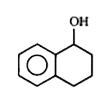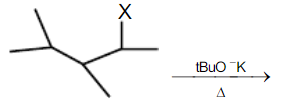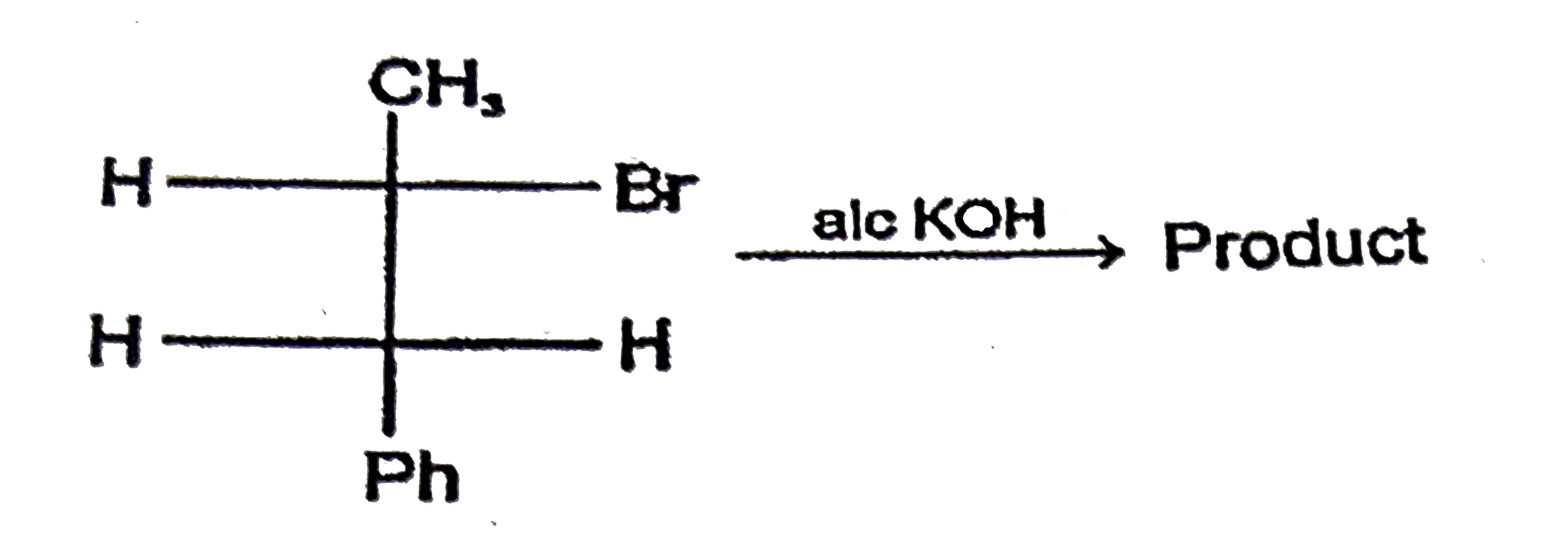Benzene + Acetylchloride product Name of the above
reaction is
Wurtz fittig reaction
Gattermann reaction
Friedel Craft reaction
Shotten baumann reaction
The correct Answer is:C
To solve the question regarding the reaction of benzene with acetyl chloride in the presence of AlCl3, we can follow these steps:
Step 1: Identify the Reactants
- The reactants in this reaction are benzene (C6H6) and acetyl chloride (CH3COCl).
Step 2: Understand the Role of AlCl3
- Aluminum chloride (AlCl3) acts as a Lewis acid catalyst. It helps in generating the electrophile from acetyl chloride.
Step 3: Formation of the Electrophile
- When acetyl chloride reacts with AlCl3, it forms an acylium ion (CH3C^+=O). This ion is the active electrophile that will react with benzene.
Step 4: Electrophilic Aromatic Substitution
- The acylium ion attacks the benzene ring, leading to the formation of a resonance-stabilized carbocation intermediate. This step is characteristic of electrophilic aromatic substitution reactions.
Step 5: Deprotonation
- The carbocation intermediate loses a proton (H+) to restore the aromaticity of the benzene ring, resulting in the formation of acetophenone (C6H5COCH3).
Step 6: Identify the By-products
- The by-products of this reaction are HCl and AlCl4^-.
Step 7: Name the Reaction
- The overall reaction is known as Friedel-Crafts acylation, which is a specific type of Friedel-Crafts reaction involving the introduction of an acyl group into an aromatic ring.
Final Answer
The name of the reaction is Friedel-Crafts acylation.
---
- The reactants in this reaction are benzene (C6H6) and acetyl chloride (CH3COCl).
Step 2: Understand the Role of AlCl3
- Aluminum chloride (AlCl3) acts as a Lewis acid catalyst. It helps in generating the electrophile from acetyl chloride.
- When acetyl chloride reacts with AlCl3, it forms an acylium ion (CH3C^+=O). This ion is the active electrophile that will react with benzene.
- The acylium ion attacks the benzene ring, leading to the formation of a resonance-stabilized carbocation intermediate. This step is characteristic of electrophilic aromatic substitution reactions.
- The carbocation intermediate loses a proton (H+) to restore the aromaticity of the benzene ring, resulting in the formation of acetophenone (C6H5COCH3).
- The by-products of this reaction are HCl and AlCl4^-.
- The overall reaction is known as Friedel-Crafts acylation, which is a specific type of Friedel-Crafts reaction involving the introduction of an acyl group into an aromatic ring.
The name of the reaction is Friedel-Crafts acylation.
Topper's Solved these Questions
Similar Questions
Knowledge Check

Product (A) of the above reaction is :A B
B C
C D
D

Product (A) of the above reaction is :A B
B C
C D
D

Product (C) of the above reaction is :A B
B C
C D
D
Find the product of above reaction

View SolutionCH3−C≡CHHgSO4−−−−−−−→dil.H2SO4 product
Product of the above reaction is
View Solution(a) Phthalaldehyde Conc.NaOH−−−−−−−→ Product (→) Cannizzaro reaction
(b) α - Methylacylohexanone NaOH−−−−−−→Δ Product (→) Aldol condensation
( c) Toluene CrO2Cl2/CS2−−−−−−−−−−→H3O+ Product (→) Etard reaction
(d) Benzene +CO+HClAlCl3−−→ Product (→) Gattermann's Koch reaction
(e) Benezene +HCN+HClAlCl3−−→ Product (→) Gattermann's aldehyde synthesis
Which of the following is correct set :
View SolutionPh−NO2−Et−ClAlCl3−−→(A) , Product (A) of the given reaction is :
View Solution
Product (D) in above reaction is :
View Solution


 Product
Product